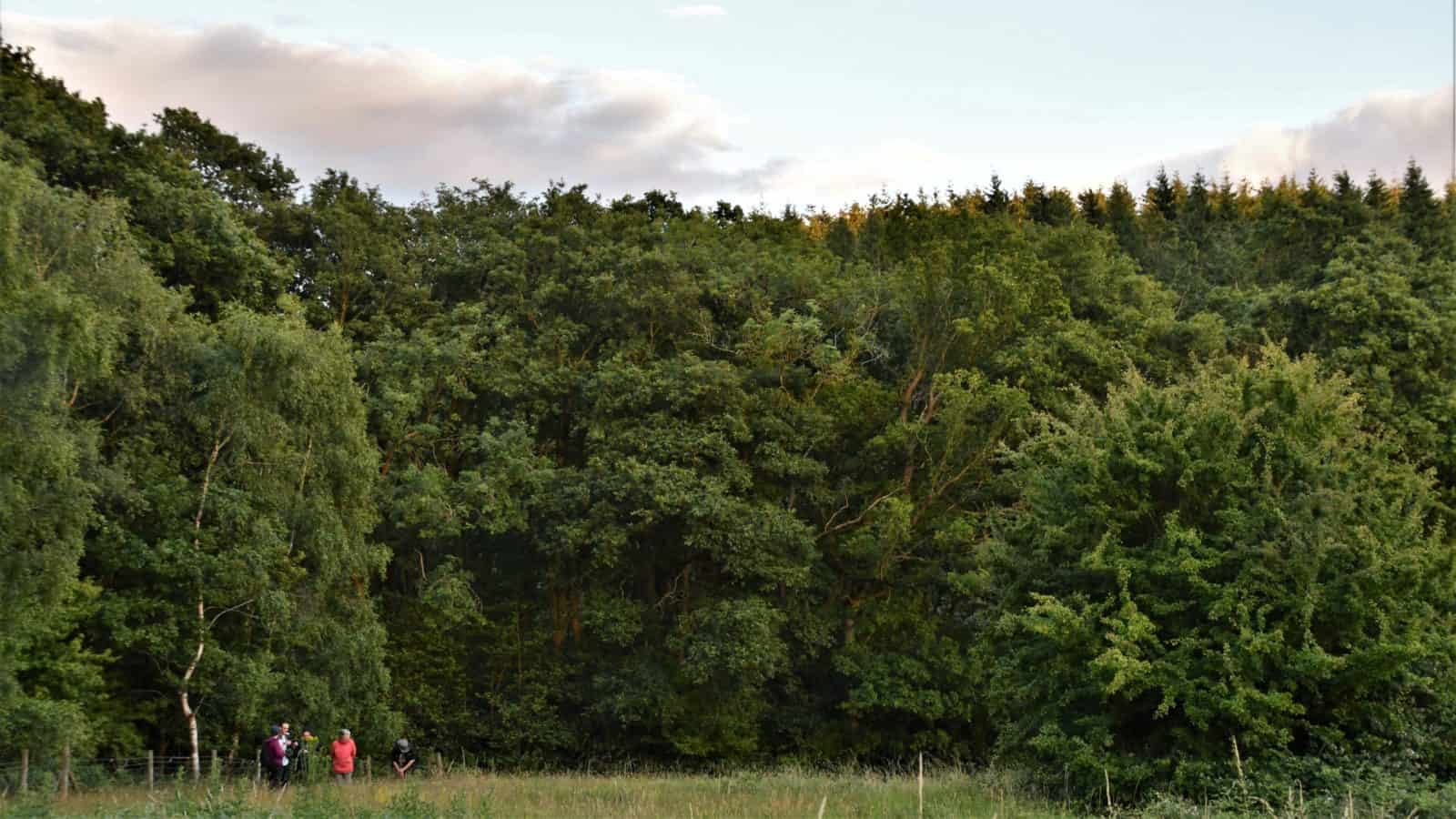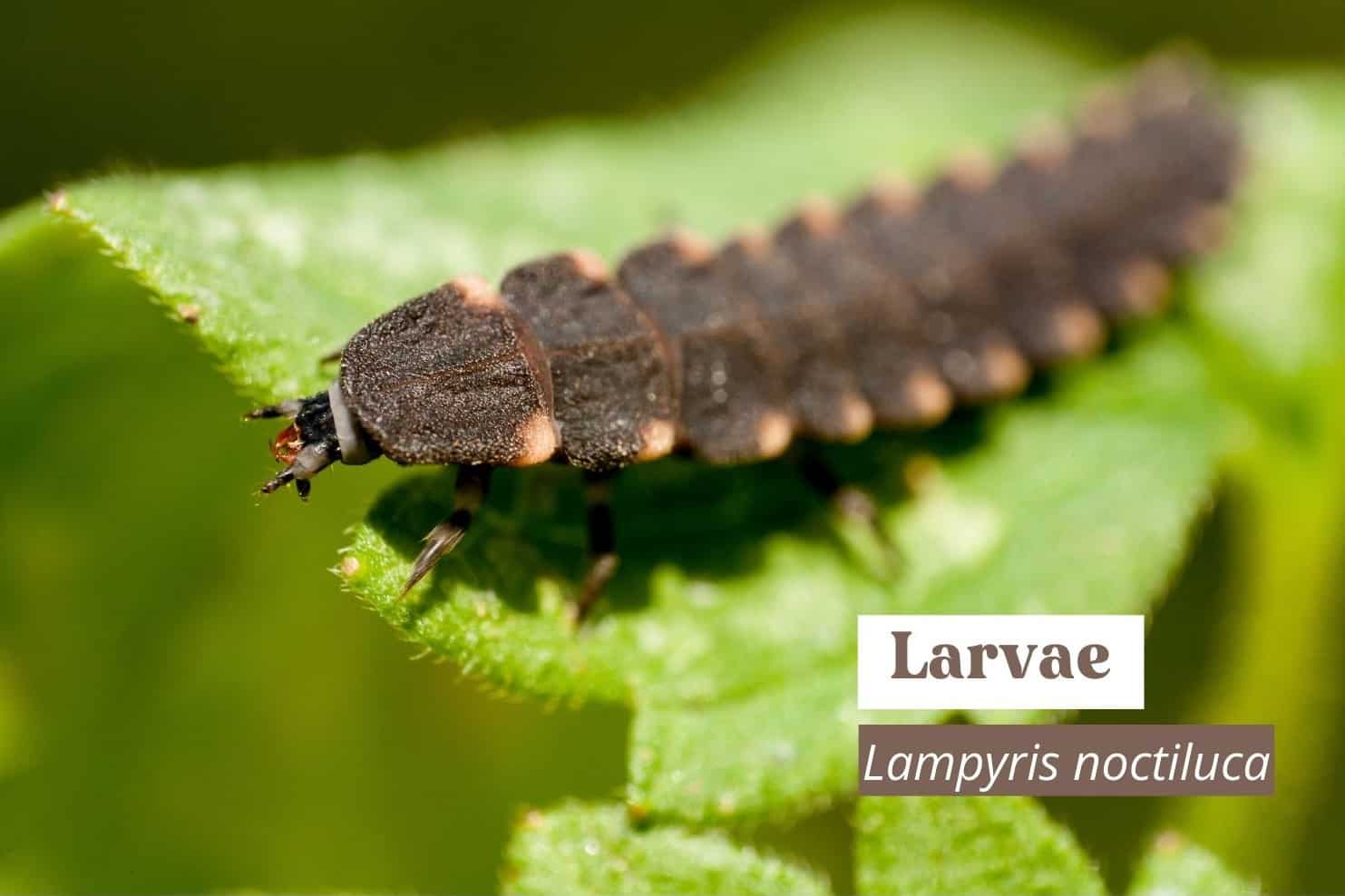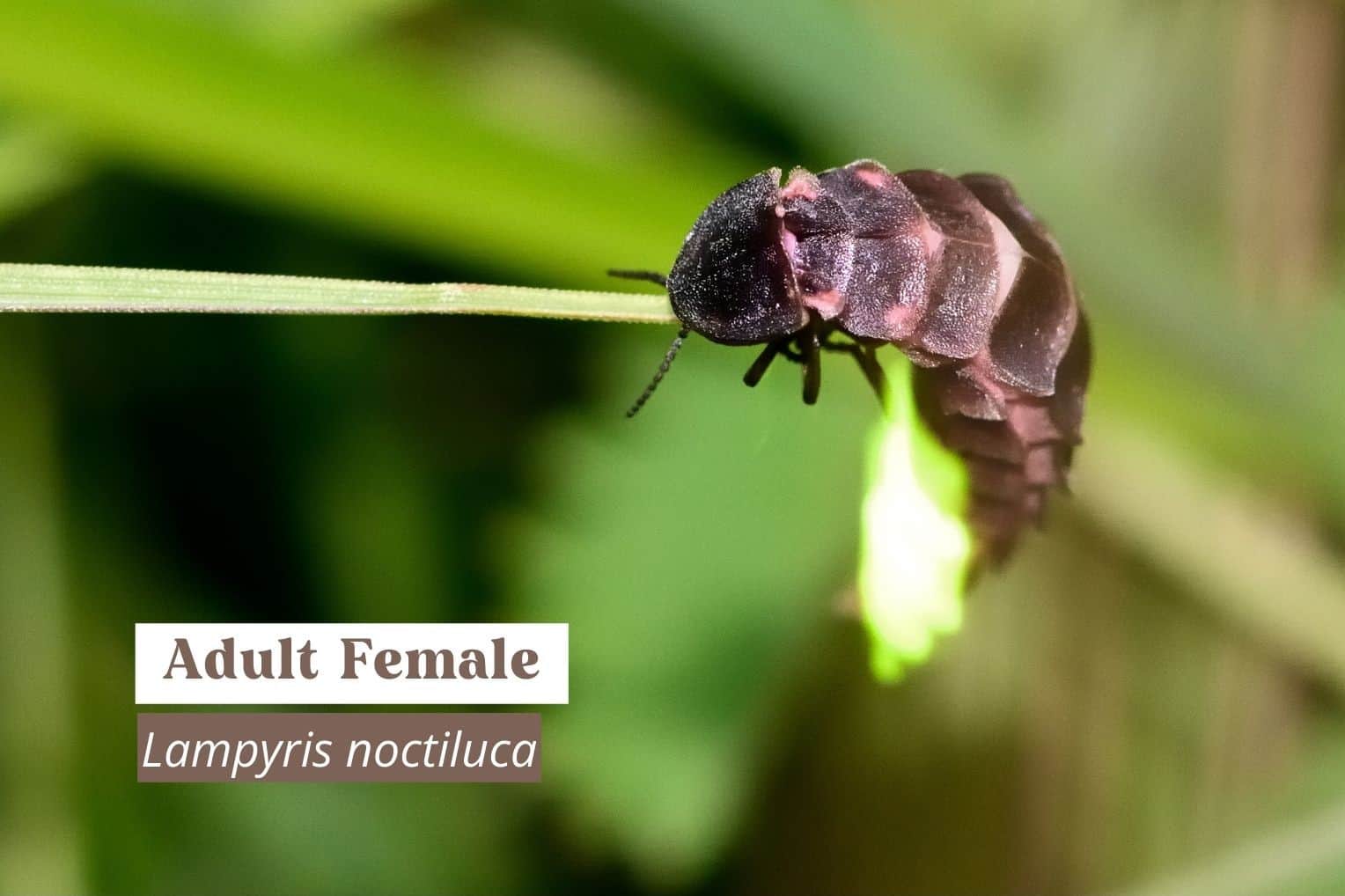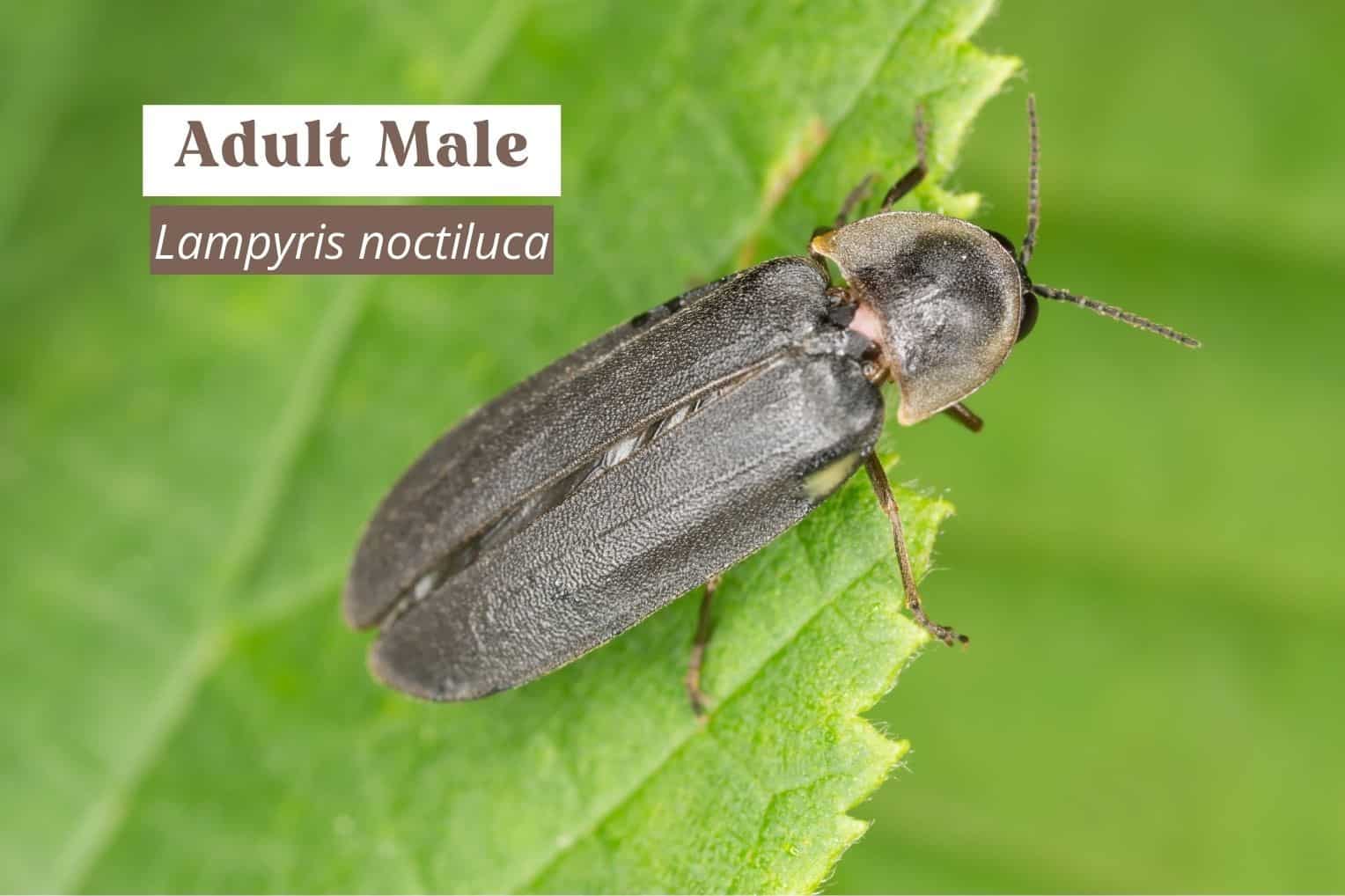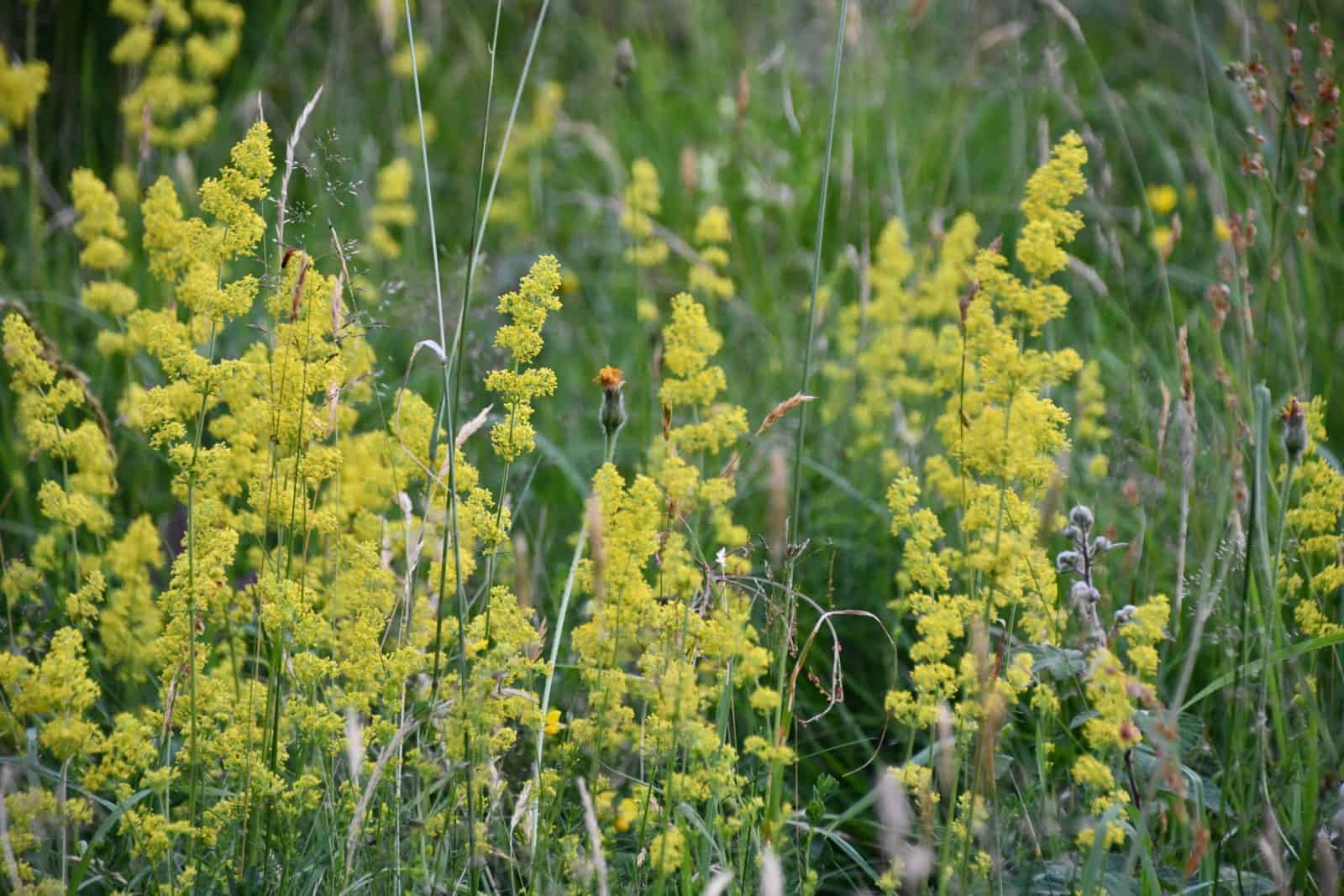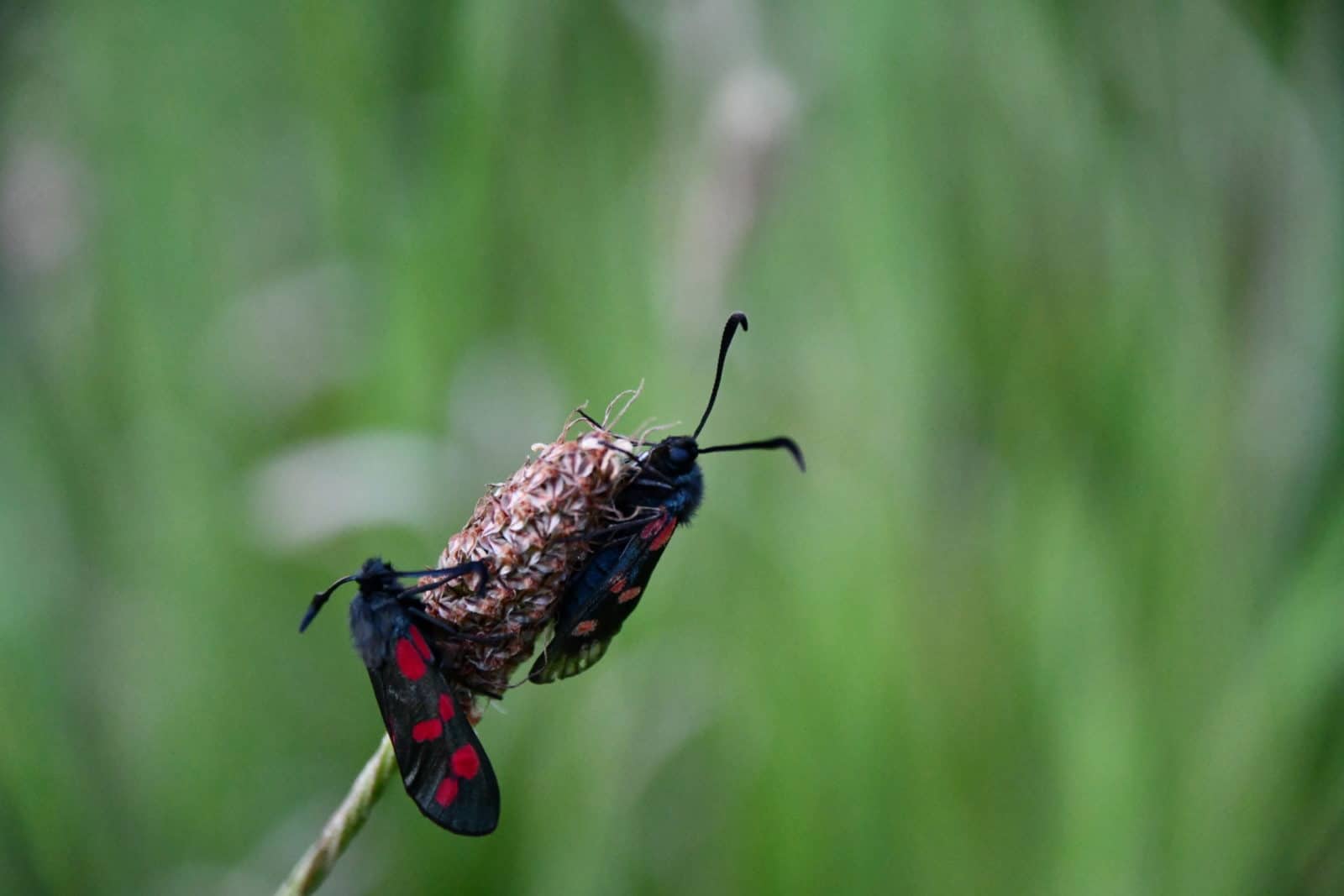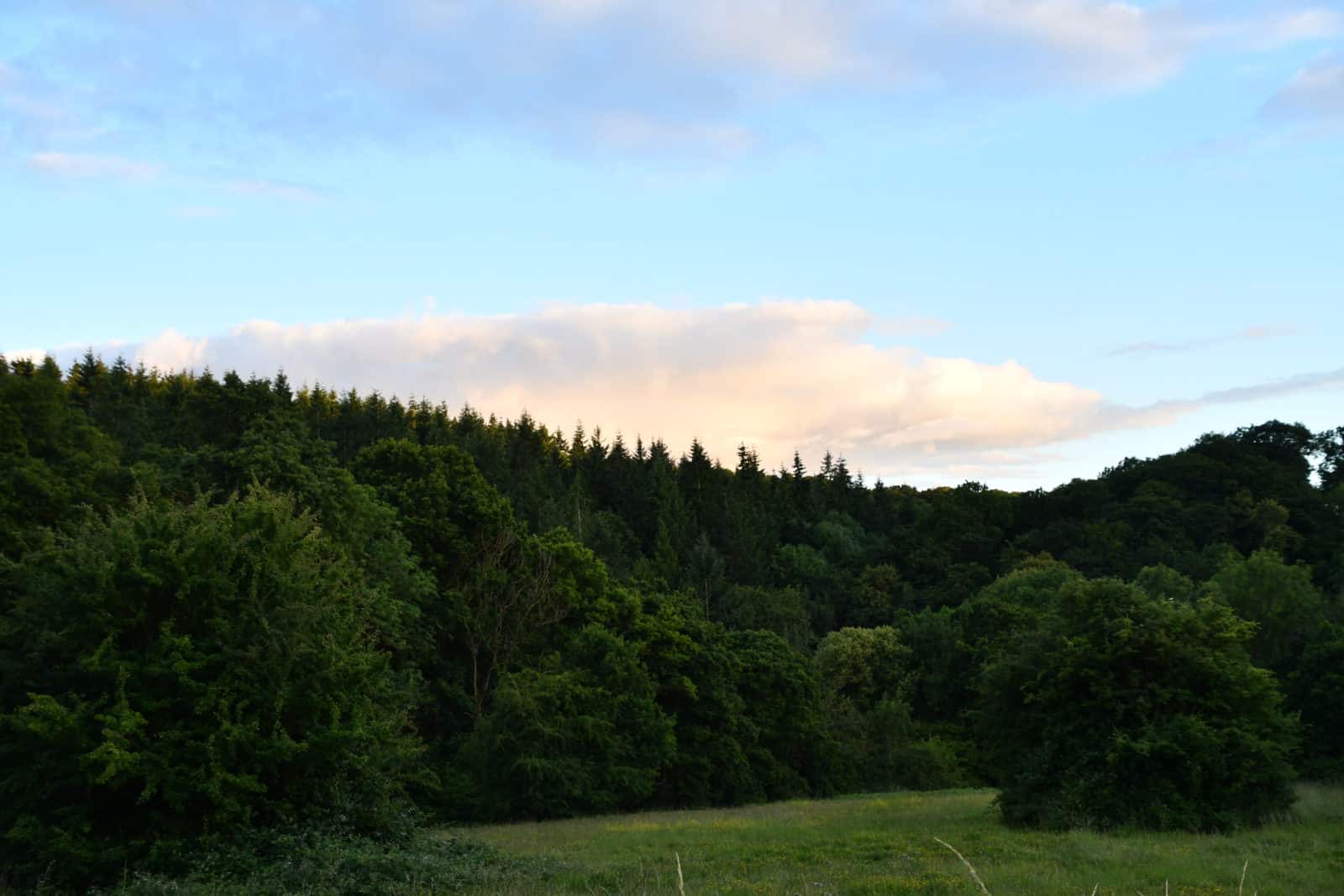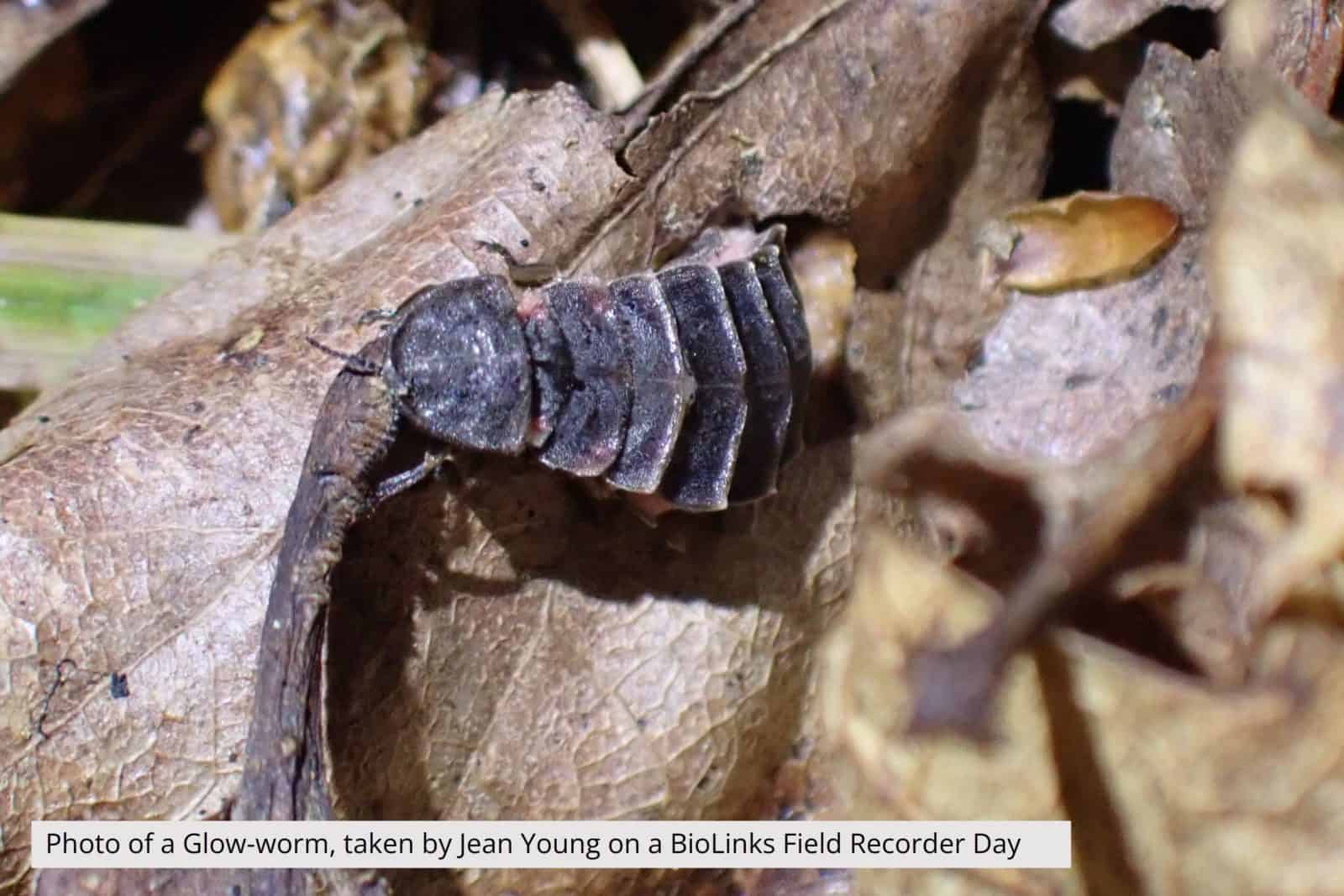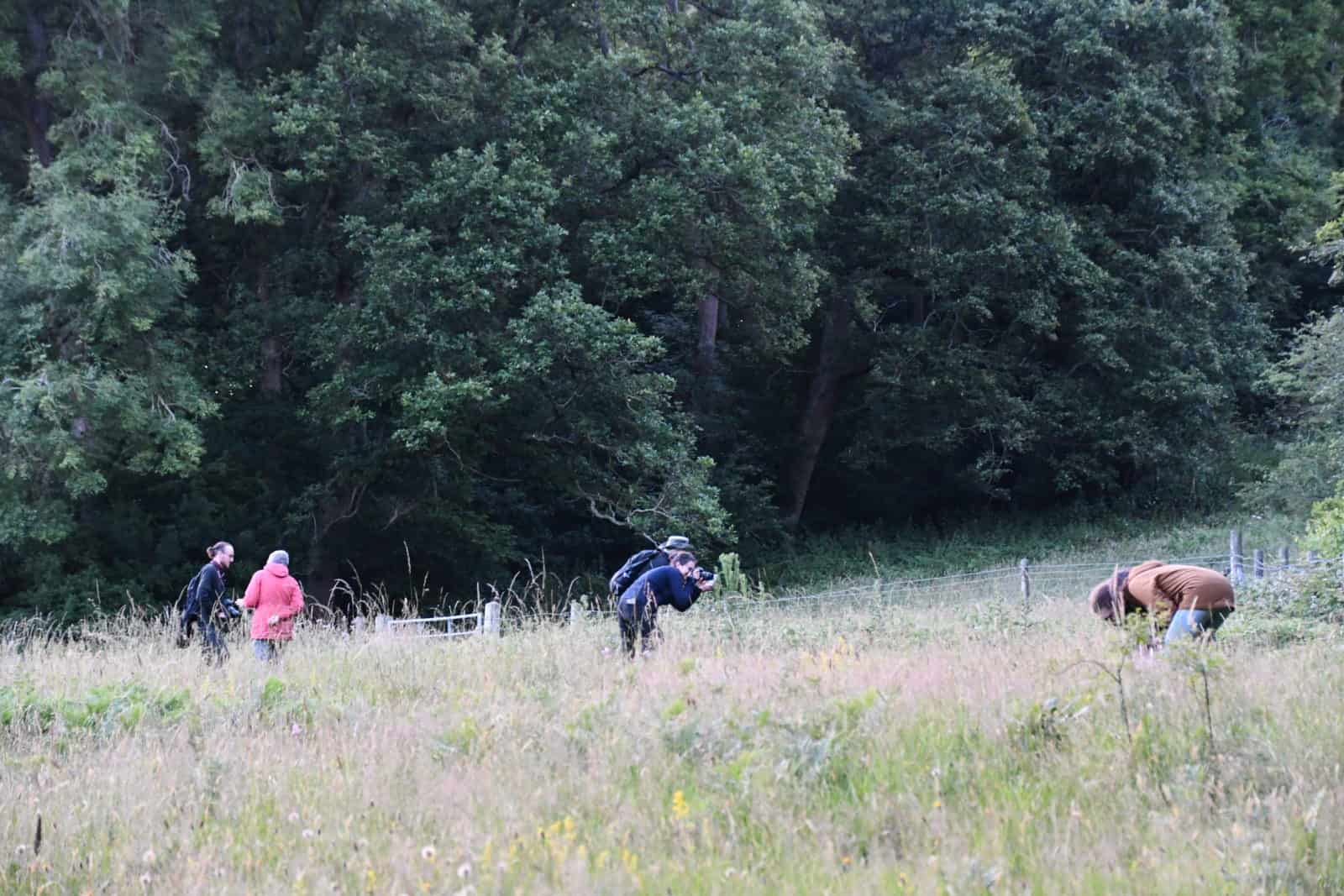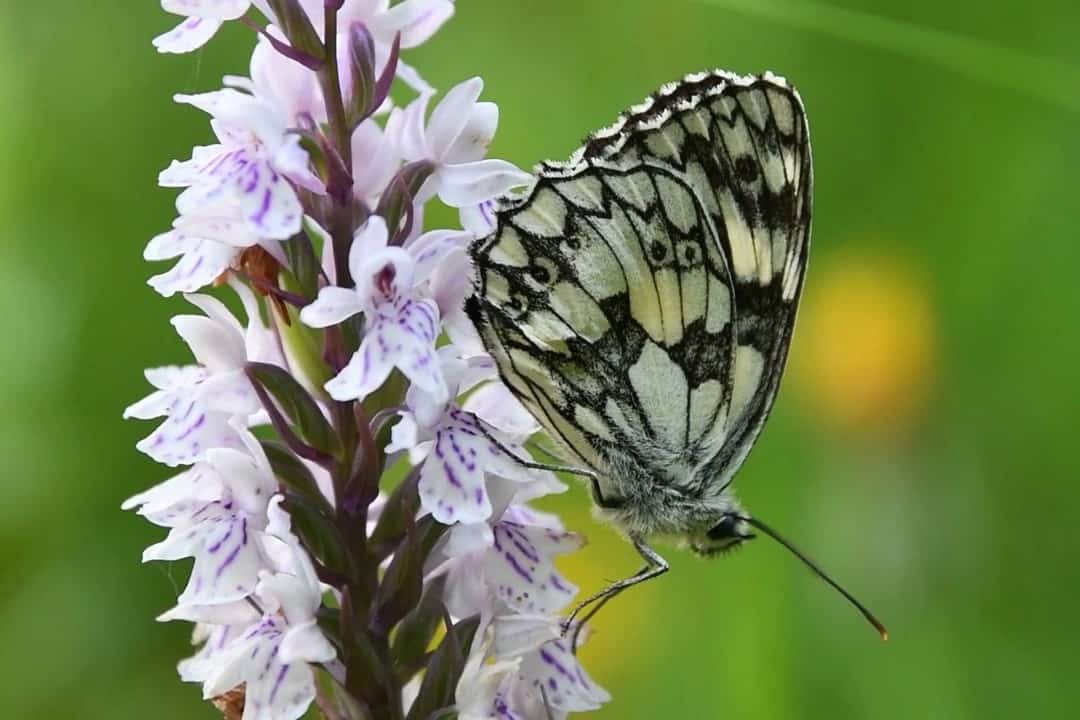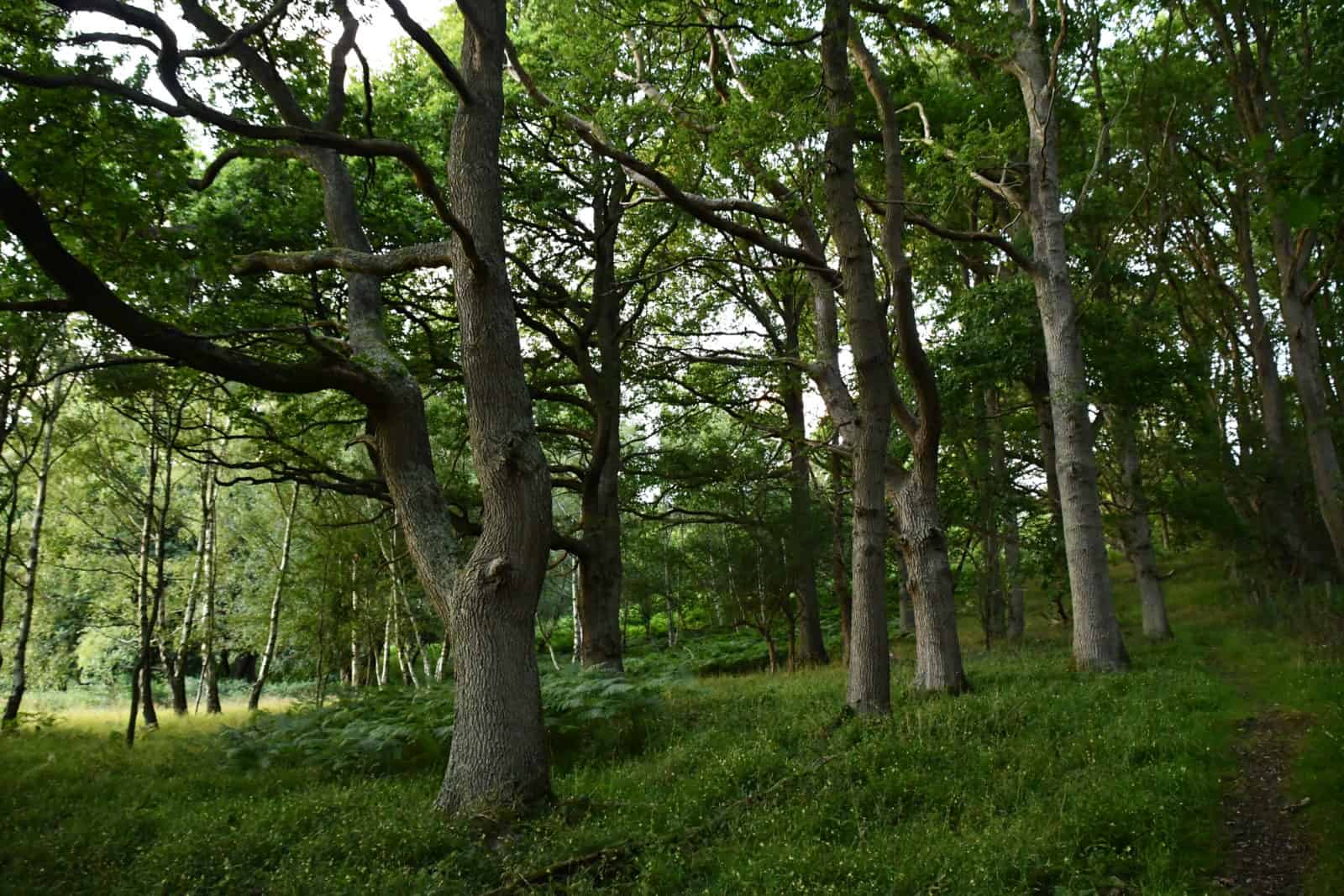Despite the name, a glow-worm isn’t a worm at all – it’s a type of beetle. In June this year, our BioLinks Project Officer, Rachel Davies, accompanied by several volunteers, went on the hunt for these interesting beetles – and they got more than they anticipated…
Blog by Rachel Davies, BioLinks Project Officer
What is a Glow-worm?
The UK’s most commonly encountered glow-worm, Lampyris noctiluca, is a fascinating species of beetle found in the UK. It gets its name from the species’ ability to emit light-green light. This is known as bioluminescence (which is the natural production of light by an organism, created by a chemical reaction), and this species is one of the few organisms which can do this in the UK. Both adult sexes can glow, with females glowing more brightly. Larvae can also glow, though not for as long, and the eggs can emit a faint light as well!
Adult males look like typical beetles. They have an elongated body and wings, with the outer pair being hardened into elytra.
Adult females look fairly untypical for beetles and are known as being ‘larviform’, closely resembling their larvae. They have no wings and are therefore flightless. They can be distinguished from larvae as they do not have paired spots on their body (Tyler, 2002).
Larvae look similar to other types of beetle larvae. They have a segmented body, with paired yellow-brown spots on the outer edge of each body segment.
Glow-worm Life Cycle
In their larval stage, glow-worms feed on slugs and snails. They can bite their prey, and with each bite, they release a digestive enzyme that is able to dissolve the proteins inside their prey (Tyler, 2002). The result is a gooey mess which the larvae can then consume – think of a sticky soup! It can take up to two years for larvae to reach maturity (Glowworms.org.uk, 2022) at which point, they pupate in burrows before emerging as adults.
Unlike the ferocious larvae, the adults do not feed (Tyler,2002). Their purpose is to mate and produce eggs – of which they can lay up to 150 (Tyler, 2002)!
Although both males and females possess the ability to glow, it is the adult females that glow the brightest. The light emitted is thought to serve several purposes. In larvae, the light is believed to display unpalatability to nocturnal predators (De Cock & Matthysen, 2003). In adults, this light is used in courtship, with wingless females using it to attract the much more mobile, and winged, adult males. Females will climb up vegetation, such as long grass stems, and begin to glow – often turning their abdomen upwards to maximise the visibility of the light-green light from their abdomens (Tyler, 2002). Females can glow for several hours, but if mated, they will stop glowing and instead use their energy to lay eggs. If they are unmated, they will retreat to ground level and wait for the next evening to try again. Adults can live for approximately 21 days (Glowworms.org.uk, 2022).
Finding the First Glow-worm
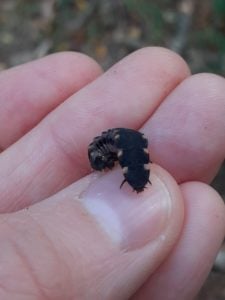
In October 2020, during an afternoon walk at the Knapp and Papermill in Worcestershire, Rachel was busy turning over logs looking for insects when she came across a single glow-worm larva. This delightful discovery was added to Twitter and iRecord, and the Worcestershire Wildlife Trust, who manage the site, were tagged. Upon receiving the record, they commented that it was the first glow-worm record for the site for quite some time! After contacting the ‘UK Glow Worm Survey’ for record details, it appeared that the last record for this site was back in 2007 when a record of 12 adults seen on 15th June was submitted by email. It was interesting to know there was a 13-year gap between sightings, and Rachel wondered if it was due to a very small population, a population decline, or the fact that no one was looking!
Setting up the Survey for BioLinks
In light of her discovery, Rachel decided to incorporate a glow-worm survey at the Knapp and Papermill into the series of BioLinks Field Recorder Days – a whole event based on finding a single larva; what could possibly go wrong?!
On the Field Recorder Day, the team were lucky to have near-perfect weather conditions for finding glow-worms, something that is impossible to predict when planning a calendar of events months in advance. With nine volunteers and Olivia Watts (Biodiversity Content Officer for the Field Studies Council), the team set off full of excitement as the weather seemed too good to be true!
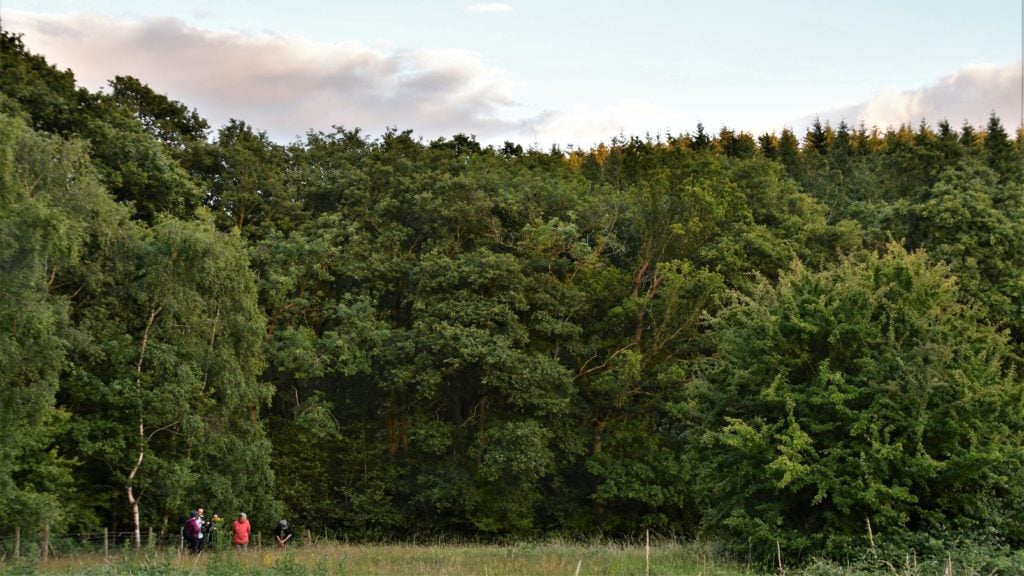
The team decided to survey close to where the original larva had been found- this was near a large open meadow, so it provided grassland and a woodland edge to search. As it was getting dark, a couple of hours were spent searching the meadow, which was filled with butterflies, moths and a delightful display of wildflowers.
It wasn’t until roughly 10.30pm when the first person said, “I’ve seen a glow-worm!”- at which point the team all hurried over to see for themselves. Rachel recalled “It took longer than I thought to spot the glow – I remember being quite surprised at how small the light emitted was, and I realised that they would actually be quite easy to miss if you were just walking past and not searching!“
Once the team had seen the first female, they knew which habitat to survey, so chose a fixed transect line which took them along the edge of the woodland, and along the edge of the meadow. They walked each transect once, counting all the glowing females. They also quickly checked each female with a torch in an attempt to spot males- which are much harder to see. In total, they found 18 glowing females and spotted 3 males – which also included one mating pair!
Overall, the event was a huge success, with many of the volunteers seeing a glow-worm for the first time! Alongside this, the team were able to provide important records for the Worcestershire Wildlife Trust and the Knapp and Papermill.
Finding Glow-worms
In the UK, the peak season to see adult glow-worms is June and July, however, adults will be active from May up until September time (Tyler, 2002). You can find active larvae between April and October; they have a longer period of activity than the adults.
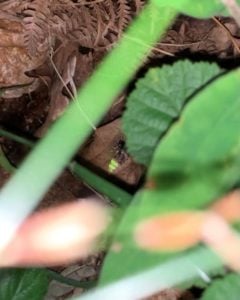
Adult glow-worms can be found in a variety of habitats. Improved grassland tends to yield the best results (Tyler, 2022), however, sightings also come from places such as roadside grass verges. They may also be found along canal towpaths, in churchyards and along disused railway lines (Tyler, 2002), so please do look anywhere local to you.
Checking distribution maps on the NBN Gateway before selecting a site to survey may increase the likelihood of you spotting one, however, it is also important to search in new areas as this could uncover a previously unknown population!
The fact they glow definitely helps when it comes to searching, however they are pretty particular about when they glow. They favour warm evenings, which need to be relatively still, but a bit of light rain is ok (heavy rain should be avoided). It’s also worth noting that they prefer a night with a crescent moon, and they are less likely to glow under a full moon (Tyler, 2002).
Threats to UK Glow-worms
UK populations of Lampyris noctiluca have shown that numbers of glowing females found in Southeast England have declined by an average of 3.5% per year (Gardiner and Didham, 2020). There are several theories about what could be causing these declines, although further research is needed to be certain.
Reduction and fragmentation of suitable habitats is one of the factors attributed to a decline in glow-worm numbers, although this is an issue faced by much of our wildlife. It particularly impacts those species, like glow-worms, than have a limited ability to disperse. Egg-laying, wingless females lack the ability to fly and repopulate areas, meaning populations can easily become isolated. This puts them at a higher risk of decline due to changes in their environment and a loss of genetic diversity.
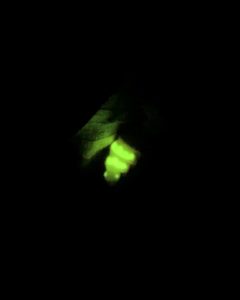
It has been suggested that declines in glow-worm numbers have arisen in certain areas due to the crash in rabbit numbers in the 1950’s, caused by myxomatosis. This in turn increased the growth of woody scrub on chalk downland sites, which had historically been prime habitat and important sites for glow-worms (Tyler, 2002). With an increased density of scrub, male glow-worms become unable to see the glow emitted by females – ultimately preventing the beetles from reproducing. It is therefore recommended that sites with glow-worm populations need to manage scrub cover to ensure glow-worms have their preferred habitat.
Additionally, there is mounting evidence that light pollution from artificial light sources impacts the ability of males to locate and mate with females (Bird & Parker 2014; Elgert, C , 2020 and Van Den Broeck et al, 2021) – not surprising when they rely on bioluminescence signalling to find one another!
The UK Glow-worm Survey
Glow-worm records are managed by the ‘UK Glow Worm Survey’. Any records submitted to the scheme will be checked and verified by an expert before being made available on the NBN Gateway.
Records can be submitted to the scheme through iRecord, using the ‘Glow-worms’ species group form. Pictures are encouraged when submitting records, particularly for records of larvae as they can be confused with other invertebrates.
Learn More
Beetles are a diverse invertebrate group, with some very weird but wonderful species. Learn more about them on one of our beetle courses.
References
- Bird, S. and Parker, J. (2014). Low levels of light pollution may block the ability of male glow worms (Lampyris noctiluca L.) to locate females. Journal of Insect Conservation, [online] 18(4), pp.737–743.
- De Cock, R. (2003). Glow worm larvae bioluminescence (Coleoptera: Lampyridae) operates as an aposematic signal upon toads (Bufo bufo). Behavioral Ecology, [online] 14(1), pp.103–108.
- Elgert, C., Hopkins, J., Kaitala, A. and Candolin, U. (2020). Reproduction under light pollution: maladaptive response to spatial variation in artificial light in a glow worm. Proceedings of the Royal Society B: Biological Sciences, online.
- Gardiner, T. and Didham, R.K. (2020). Glowing, glowing, gone? Monitoring long‐term trends in glow worm numbers in south‐east England. Insect Conservation and Diversity, [online] 13(2), pp.162–174.
- Glowworms.org.uk. (2022). UK Glow worm survey home page. [online] Available at: https://www.glowworms.org.uk/.
- Tyler, J. (2002). The Glow-worm. Lakeside Press, Sevenoaks.
- Van Den Broeck, M., De Cock, R., Van Dongen, S. and Matthysen, E. (2021). Blinded by the Light: Artificial Light Lowers Mate Attraction Success in Female Glow-Worms (Lampyris noctiluca L.). Insects, [online] 12(8), pp.734.

